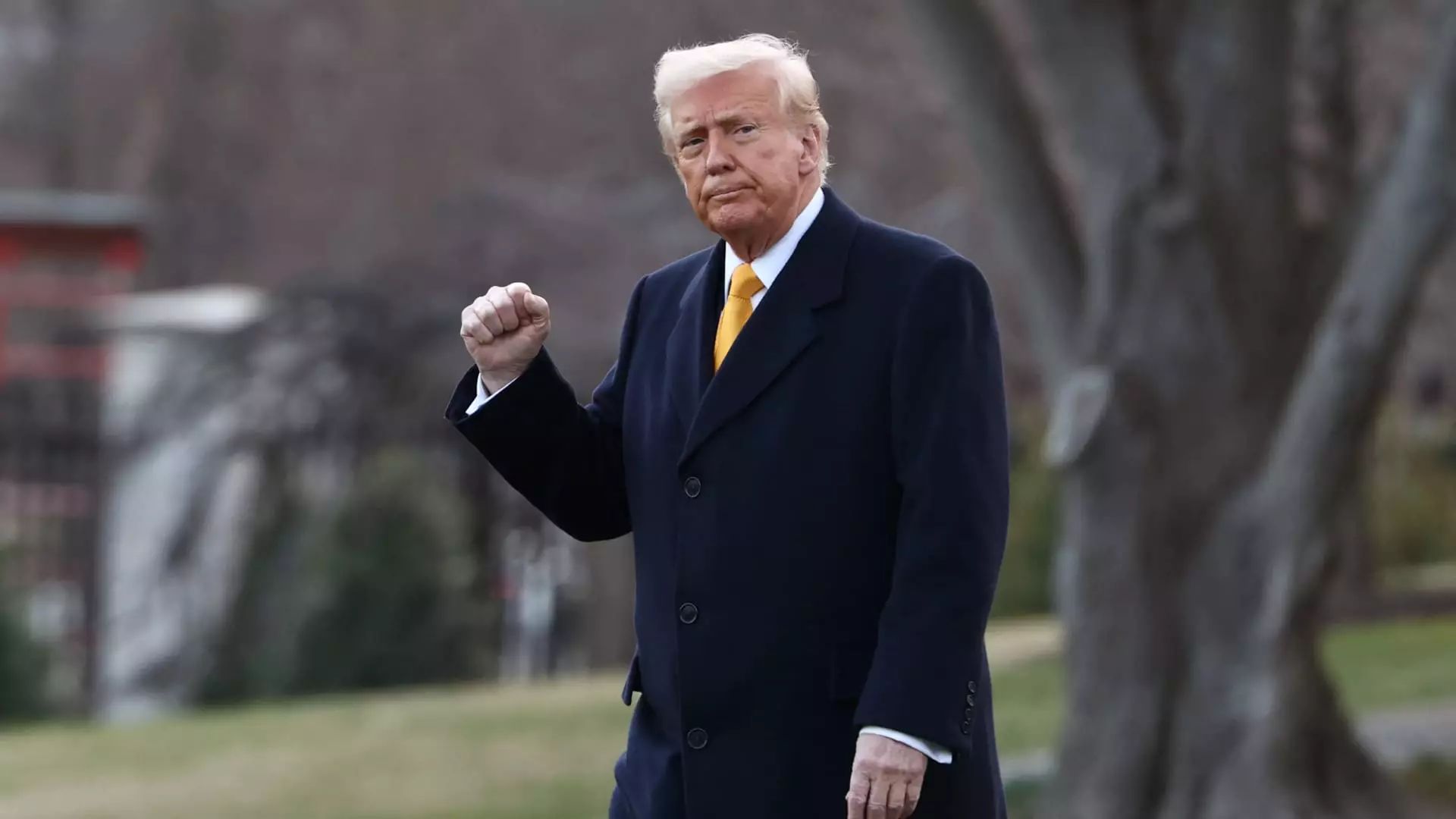In the tumultuous realm of American politics, few decisions carry the potential to upend millions of lives like those involving education and student loan management. Recently, President Donald Trump has signaled intentions to sign an executive order aimed at dismantling the U.S. Department of Education. With a staggering $1.6 trillion in federal student loans hanging in the balance, the ramifications of this decision are nothing short of alarming.
Resource Starvation: A Path to Oblivion
One glaring issue underscoring this executive order is the clear strategy of resource starvation. While it is true that Congress holds the constitutional authority to eliminate the Education Department entirely, the Trump administration’s approach appears calculated. By laying off nearly half of the department’s staff — a reduction from 4,133 employees to just 2,183 — the executive branch is fostering an environment where the department can hardly function. This isn’t merely an administrative shift; it is an assault on the educational framework that supports over 40 million federal loan borrowers. Such a deliberate focus on dismantling the operational capacity of a critical institution hints at a deeper agenda where the impact on the average American is grossly disregarded.
The Overlooked Impacts on Borrowers
What does this mean for the millions carrying federal loans? Experts from organizations like The Institute for College Access and Success voice concern that this situation could lead to chaos. Michele Shepard Zampini warns that with diminished resources, borrowers’ experiences will inevitably suffer. Imagine being part of a staggering number of individuals burdened by debt, only to face an uncertain future because the agency tasked with managing your loans is in disarray. This scenario presents a bleak outlook for those eager to seek loan forgiveness programs or income-driven repayment plans.
Pointing Fingers: Misplaced Responsibilities
President Trump’s assertion that federal loans should be managed by another agency reveals a fundamental misunderstanding of the complexities involved in student loan servicing. He casually suggests agencies like the Treasury Department or even the Small Business Administration could take on these heavy responsibilities. While the Treasury Department already plays a role in collecting debts, it is crucial to recognize that handling student loans isn’t merely about collecting money; it involves understanding educational policies, managing federal programs, and advocating for borrowers’ rights. Designating ill-equipped agencies like the Commerce Department or SBA to manage such crucial matters does a disservice to borrowers who depend on knowledgeable oversight.
Stalled Applications and Increased Confusion
With scholarship and loan forgiveness programs already ensnared in legal tangles, the last thing borrowers need is an additional layer of confusion. Analysts argue that this executive order could lead to stalled applications and delayed processes for existing relief programs. Drawing from historical precedents, abrupt changes in administration can create bureaucratic paralysis. Borrowers trying to secure relief amidst shifting oversight face heightened levels of anxiety; their futures hang in the balance while agency powers are realigned.
Borrowers’ Rights at Risk…But Not Really?
Despite all of this upheaval, one fact remains consistent: The fundamental terms and conditions of existing federal student loans cannot be altered due to a change in administration. Borrowers’ rights seem protected on paper, originating from the master promissory note signed at loan initiation. However, this theoretical security does little to assuage the real, day-to-day anxieties experienced by those burdened with loans. Will future iterations of loan forgiveness maintain their integrity? Will the much-touted ‘borrowers’ rights’ survive the administrative chaos? These questions loom large as uncertain futures grip the hearts of millions.
While the executive order demonstrates a clear shift in policy direction, it invites questions about the broader implications for borrowers. The potential for mismanagement looms large, and the idea that agency changes can bring about efficiency feels like a distant hope. As we watch this unwinding saga unfold, it becomes increasingly apparent that our commitments to education — and the values we attach to it — are at risk when power dynamics shift in a capricious dance of politics.


Leave a Reply